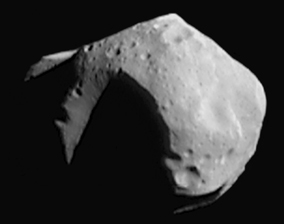Asteroid 2025 OL1 to Pass Earth on July 30: NASA Confirms Details

NASA has confirmed that the asteroid designated 2025 OL1, approximately 110 feet in diameter, is on a trajectory that will bring it close to Earth on July 30, 2025. This celestial body, comparable in size to a small airplane, presents significant interest for both astronomers and space enthusiasts alike.
According to Dr. Mark V. Sykes, CEO of the Planetary Science Institute, 'Monitoring near-Earth objects like 2025 OL1 is crucial for understanding potential impact threats and for planning future space missions.' The asteroid is part of a larger population of near-Earth objects (NEOs) that scientists are actively tracking, particularly as they can provide insights into the formation of the solar system.
The close approach of 2025 OL1 will occur at a distance of approximately 0.0003 astronomical units, equating to roughly 35,000 kilometers or 22,000 miles from Earth. While this distance is considered safe, it nonetheless captivates the attention of the scientific community. NASA's Near-Earth Object Observations (NEOO) program, which is responsible for tracking NEOs, has been monitoring this asteroid since its discovery.
In a statement released on June 15, 2025, NASA's Dr. Lindley Johnson, the Agency's Planetary Defense Officer, remarked, 'We are confident that 2025 OL1 poses no threat to Earth. However, its passage provides an excellent opportunity for research and public engagement regarding planetary defense.' This sentiment is echoed by Dr. Amy Mainzer, a senior scientist at NASA's Jet Propulsion Laboratory, who further added, 'Understanding the composition and behavior of such asteroids can help us prepare for future missions to divert potential threats.'
Historically, the study of asteroids has led to crucial findings about planetary formation and the potential for mining resources in space. The 2025 OL1 event serves as a reminder of humanity's ongoing quest to explore the cosmos and ensure the safety of our planet. As more asteroids are discovered and monitored, the importance of international cooperation in planetary defense efforts increases.
In addition to scientific research, the close approach of 2025 OL1 is expected to generate public interest, with many amateur astronomers planning to observe the event. Educational institutions may also leverage this opportunity to engage students in discussions about space science and astronomy.
As the date approaches, NASA and various space agencies worldwide will provide updates and educational resources to enhance public understanding of near-Earth objects and their significance in our solar system. On July 30, 2025, the world will turn its gaze skyward to witness the flyby of asteroid 2025 OL1, a moment that encapsulates both the wonders and the perils of our universe.
Advertisement
Tags
Advertisement





